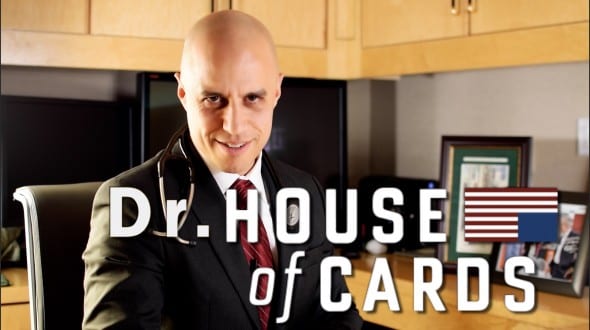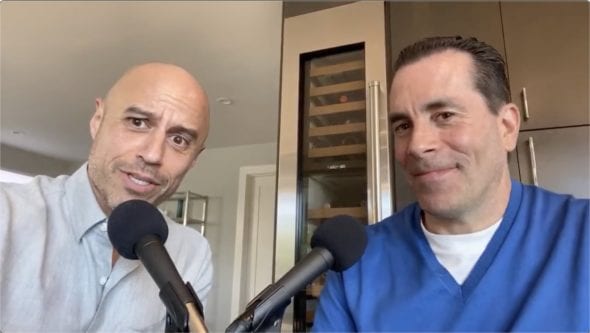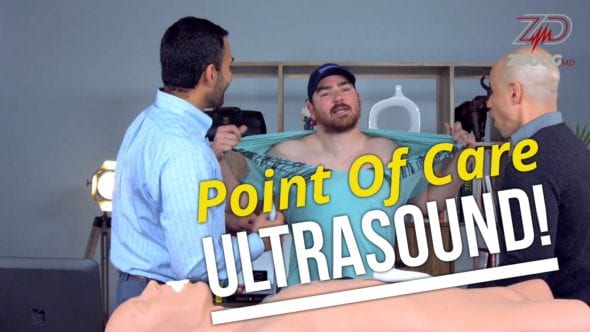Being a thought leader ain’t easy.
So I’ve chosen to be a thought follower. But every now and then I write down some thoughts, mostly stolen, and someone publishes them. The AAMC Reporter recently published just such a piece, and it was reprinting in The Healthcare Blog and KevinMD. BUT…they edited out all the horrible humorous bits! So I’ve included the unmolested version here. And I’m even gonna throw in Turntable Health Cribs, a quick MTV-style walkthrough of our dope clinic, courtesy of Fremont East Studios. Shazaam! (Is that still a thing?)

Rebooting Primary Care by ZDoggMD
For the better part of a decade, I practiced inpatient hospital medicine at a large academic center (the name isn’t important, but it rhymes with Afghanistan…ford). I used to play a game with the med students and housestaff: let’s guess how many of our inpatients didn’t actually need to be in the hospital, had they simply received effective outpatient preventative care. Over the years, our totals were almost never less than 50%. For my fellow math-challenged Americans: that’s ONE HALF! Clearly, if there were actually were any incentives to prevent disease, they sure as heck weren’t doing much.
In a country whose care pyramid is upside down—more specialists than primary care docs, really?—we’re squandering our physical, emotional, and economic health while spending more per capita than anyone else. Four percent of our healthcare dollars go towards primary care, with much of the remaining 95% paying for the failure of primary care. (The missing 1%? Doritos.) Worse still, the oppressive weight of our non-system’s dysfunction falls disproportionately on the shoulders of our primary care providers—the very instruments of our potential salvation. To them, there’s little solace (and plenty of administrative intrusion) in the top-down reform efforts of accountable care organizations and “certified” patient-centered medical homes.
But what about a bottom-up, more organic effort to reboot healthcare? A focus on restoring the primacy of human relationships to medicine, empowering patients and providers alike to become potent, positive levers on a 2.8 trillion dollar economy? What if we could spend twice as much on effective, preventative primary care and still pull off a net savings in overall costs, improvements in quality, and increased patient satisfaction? What if George Lucas had just quit after the original Star Wars series? Wouldn’t the world have been better without Jar Jar Binks?
While the latter question is truly speculative, the former ones aren’t. We’re trying to answer them in Las Vegas (hey now, I’m being serious) at Turntable Health, where we’ve partnered with Dr. Rushika Fernandopulle and Cambridge, MA based Iora Health. We aim to get primary care right by doing the following:
1. Fix incentives. Fee-for-service reimbursement structures encourage providers to do things TO people, instead of purely FOR them. My father, a dedicated primary care doc, used to encourage me to specialize because “there’s $500 in everyone’s colon. Go in with a scope and retrieve it!” This ridiculous incentive system has no place in primary care where it rewards episodic rushed sick-care visits (with often unneeded referrals and testing). By banishing fee-for-service insurance in favor of a flat-fee membership model, we incentivize strong relationship building and longitudinal population management. Ditching insurance billing means up to 20% less overhead and 2434.76% less aggravation. We eliminate copays and barriers to care, encourage use of convenient methods of patient engagement (phone, video, email, group visits, yoga classes), and free providers to focus on outcomes, cost, and patient satisfaction for their entire panel. Unlike “concierge” models reserved for the wealthy, our services are offered with wrap-around insurance plans by the not-for-profit Nevada Health CO-OP and are eligible for federal subsidies on the state health exchange. That’s a model that puts the “care” back in Obamacare, folks.
2. Shift the culture. There’s no “I” in “team” and but there’s a “we” in “well.” Apart from making the lamest bumper sticker ever, this sentiment makes sense and should drive a new culture of care—away from cowboy autocracy and towards non-hierarchical, collaborative teams where everyone gets to practice at the top of their license. We have doctors working with nurses and licensed clinical social workers, but the unique twist comes with our health coaches. Drawn from the very communities they serve, they’re hired for empathy and emotional intelligence and trained for the skills needed to motivate and support patients in setting and attaining goals. Each morning our entire care team “huddles” to discuss all the patients to be seen that day, and all the patients who AREN’T but who merit outreach to keep them out of trouble. There’s teaching, learning, and feedback. It’s goose-bump inducing stuff, folks, and should inspire medical students to actually care about caring again.
3. Make tech NOT suck. Most electronic health records are glorified insurance billing platforms…with some patient care stuff thrown in for the heck of it. So our partners Iora Health had to build one from scratch. Issue-based, with seamless assignment of tasks to a members of the collaborative team, it facilitates effective preventative population management while stripping away boilerplate nonsense designed to please no one but a bean counter at an insurance company. Patients can read (and soon write in) their record because, well, it’s THEIRS, isn’t it? Tech should create connections, not barriers.
The results of all this? Significant improvements in hypertension, diabetes, and depression control. Evangelical patients whose satisfaction scores skirt the 90% range. Providers who love coming to work each day. And an overall reduction in costs DESPITE the higher upfront spend on primary care. It’s the Wikipedia definition of “no brainer.”
Which is why academic medical centers should be exposing their trainees to what we and others, like Qliance, are doing to innovate in primary care. They should implement similar clinical models for their own institutions, models that encourage collaboration and break down hierarchical, autocratic structures. Because what’s better for patients is also better for students, who know full well that they are entering a horribly dysfunctional system. We’ve seen how inspired they become when they see primary care at its best, when doctors are freed to simply do the right thing for patients. This is what the future of healthcare needs to look like.
Related Videos
Category
- The ZDoggMD Show (799)
- Featured Videos (188)
- Doc Vader (142)
- Against Medical Advice (128)
- Medical Humor (95)
- Public Service Announcements (87)
- Music Parodies (74)
- Nurses (59)
- Meditation (38)
- ZVlogg (36)
- The VPZD Show (31)
- ZTalks (28)
- ZBlogg (24)






